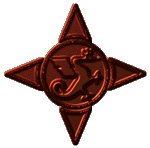


But unlike the river, the Canal did not have to open its way through immense limestone cliffs. Some people worked for it. More than 12,000 workers dug the way with shovels and pickaxes in the 1670s and 1680s. So the Canal just had to lie down in its cosy bed at the foot of the Black Mountain, where its waters come from.
At that time the Canal did not flow through Carcassonne. The town councillors were reluctant to pay, and they had disdained this new way of traffic and trade. They refused the Canal to be dug in the centre of the town. It flowed north of Carcassonne.
But everybody knows that only imbeciles never change opinion. The Carcassonnais are certainly not, and in 1810 they required that the Canal be diverted into the centre of the Lower Town.
There is a little harbour from which you can see all the activities on the Canal, especially in summer, when many boats stop here for a while.
You can follow the course of the Canal some kilometres eastwards on the towpath. Beautiful plane trees make a nice shady way between the Minervois road and a hill covered with a luxuriant vegetation.
Walking on this towpath you will see the towers and high walls of the Cité sticking out southward over the trees and the roofs of the Lower Town. A wonderful experience !
You will pass joggers, grandmas and grandpas having a siesta, people sunbathing on their boat, families enjoying a picnic, others angling...
A very peaceful moment of your stay in Carcassonne !
